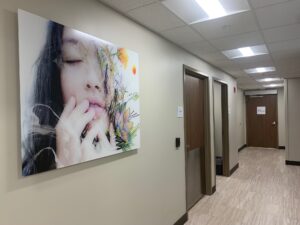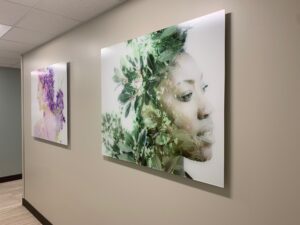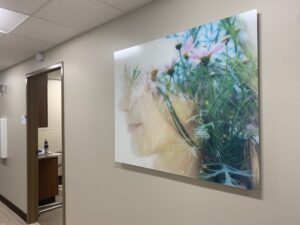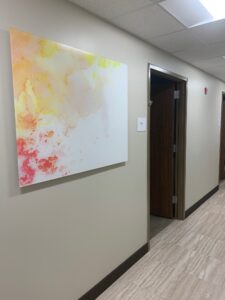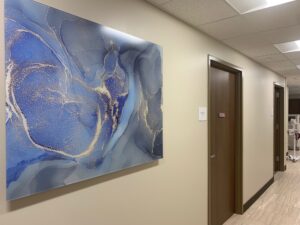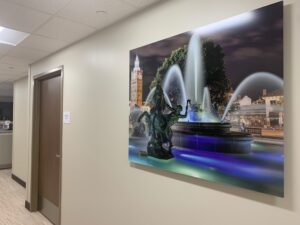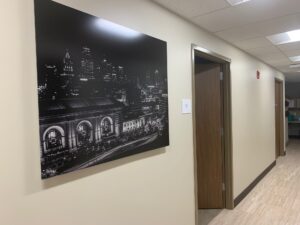The Backstory:
Every project is different and providing the client with what will work and meet their vision is our guiding principle. Within this project, for a dermatology and plastic surgery specialty practice, the team was looking for something more abstract, and our designer with our partner, Color Art, knew there was a need for something a little edgy.

Nature Infused
Taking the aesthetic images of the human form that are expected within these practices, the designer used pieces that merged these standard images with the beauty of nature, which we know is supported by Evidence-Based Design for art in healthcare settings.
The images selected presented a double exposure effect of botanical imagery over human form in a diverse collection and worked perfectly to meet the needs of the client.

Abstract
To continue the visual landscape within the space, the designer also incorporated abstract pieces to create interest and movement, while using muted colors to set a calming and welcoming aesthetic.

Local Art
Finally local art was used in specific areas within the space. Local imagery and creations by local artists offer a way to infuse comfort and familiarity, as well as a sense of belonging, within a space.

Response
The practice manager had this to say about the project, “We are very pleased with the quality of the artwork, plus they are simply beautiful pieces!”
